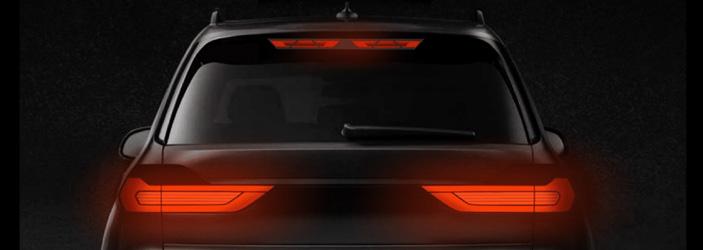
5 minute read
Automotive lighting
By Dorcas Kang'ereha
Automotive lighting refers to the various light functions on a vehicle's exterior and consists of lighting and signaling devices mounted to or integrated into a motor vehicle. These devices illuminate the road ahead for the driver and increase visibility, allowing other drivers and pedestrians to see the car's presence, size, position, direction of travel, and its driver's intentions.
Advertisement
The different types of lights used in automobiles range from traditional headlamps to modern LED and laser technology. Traditionally, the headlights of cars were a pair of one-filament bulbs that were located in between a polished reflector and glass lens, creating a halo around the light beam. The problem with these was that the reflector quickly rusted, making it less efficient and creating glare on drivers who were trying to see them.
The first modern headlamps were developed in 1919 by Bosch to solve the aforementioned problem. These two-filament bulbs were able to operate with dip switches located on the dashboard and operated both low and high beams. Today's modern automotive headlamps use LED lighting to produce a powerful, focused beam of light that illuminates the road without blinding other motorists. Some modern headlamps also have adaptive features like a "high beam" mode to help the driver see oncoming traffic.
Many automotive lighting manufacturers are now producing LEDs for a variety of applications. They are brighter than most other light sources and don't suffer from temperature changes, so they stay bright even in extreme weather conditions. They are much more energy-efficient and longer-lasting than other light sources, which means lower maintenance costs and a higher level of safety for the driver.
Another modern lighting trend is the emergence of OLEDs, or organic light-emitting diodes. They are more adaptable than other lighting options and can be produced into narrow, bendable sheets that work perfectly for dashboard screens or signal lights in the car interior. Other common lights on the exterior of a vehicle include turn signals, side markers and taillights. While these functions have not changed much over the years, they do offer more flexibility in their design.

Types of Automotive Lighting Headlamps
The headlamps of a vehicle are a major component of the overall automotive lighting system. These lights provide illumination for drivers to see the road and other vehicles, and also improve visibility for pedestrians and cyclists by reflecting off the tarmac.
HID lamps
High-intensity discharge (HID) lamps use a filament-less light source with an arc that emits light in an atmosphere of xenon gas to reduce the time it takes to warm up, making them ideal for automotive headlamps. However, they do require a large starting voltage to ignite the arc and are only suitable for highbeam applications.
LED lights
The most recent innovation in automotive lighting is the light-emitting diode (LED). These semiconductors, which are solid-state electronics with no components that wear out, produce light when current flows through them. They are becoming increasingly popular for automotive lighting systems due to their energy efficiency, luminous efficacy and ease of intensity control through current modulation or pulse width modulation.
Adaptive headlamps
Some high-end vehicles are being equipped with adaptive headlamps that automatically adjust the beam of each headlight to the conditions and topography of a given road. These systems are particularly useful for blind-spot detection and reducing accidents by focusing on the areas in front of the vehicle that need extra illumination.
Daytime running lights and fog lights
Some countries permit or require a vehicle to be equipped with daytime running lights, which can illuminate the roadway for drivers. They may be functionally dedicated lights or a combination of low and high beam headlamps, front turn signals, and front fog lights.
Emergency vehicles usually have distinctive lighting equipment to warn other drivers of their presence and indicate the priority of movement in traffic. These can include bright warning lights that flash in sequence or a rotating bar of light that changes color as the vehicle moves forward, and sometimes also a directional beam of white light on the exterior.
In addition, many new vehicles have a variety of other exterior lighting features such as a rear-vision camera that helps the driver to safely reverse a vehicle out of a driveway, a pair of red warning lines projected onto the road when the car is reversing and other visual cues that indicate the vehicle's status or intention on the road.
Transparent head-up displays and cameras
In order to communicate more clearly with other drivers, the driver needs to be able to see and understand what is going on around them, and this can be done by using transparent headup displays or integrated camera systems. These new technologies can display information such as a vehicle's battery level, its position in the queue for an exit ramp or even whether it is in autonomous-driving mode.
Aside from the above mentioned lighting, there are other lighting applications that are gaining more popularity on the auto scene, including license plate lights. Some countries have strict enforcement rules against failing to have working license plate illuminators, so these small bulbs are becoming more and more important for the safety of drivers and other road users.






